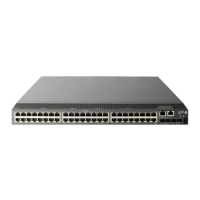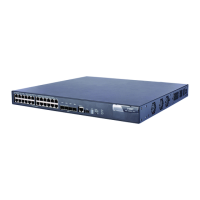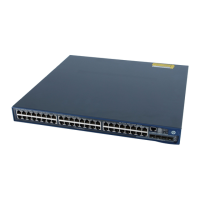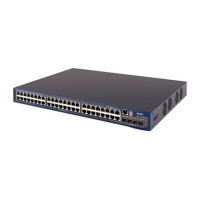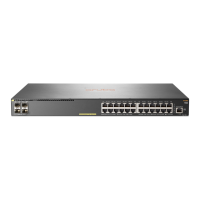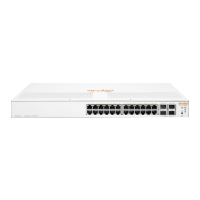104
NOTE:
To guarantee the functionality of the SFP+ ports, use only HP SFP or SFP+ transceiver modules.
The SFP and SFP+ transceiver modules available for this switch series are subject to change over time. For the
most up-to-date list of SFP transceiver modules, consult your HP sales representative or technical support
engineer.
For the SFP transceiver module specifications, see
HP A-Series Switches Transceiver Modules User Guide
.
The SFP+ cables available for the A5800 and A5820X switches are 10 Gbps SFP+ Cu cables, as shown
in Figure 93.
Figure 93 SFP+ cable
LEDs
Table 24 shows the availability of each LED on an A5800 or A5820X switch.
Table 24 LEDs at a glance
Both A5800 and A5820X series
A5800-48G-PoE+ (2 slots), A5800-48G-PoE+ TAA (2 slots), A5800-
24G-SFP (1 slot), A5800-24G-SFP TAA (1 slot)
A5820X-24XG-SFP+, A5820X-24XG-SFP+ TAA, A5820X-14XG-SFP+
(2 slots), A5820X-14XG-SFP+ TAA (2 slots)
A5800 series but the following models:
A5800-48G-PoE+ (2 slots), A5800-48G-PoE+ TAA (2 slots), A5800AF-
48G, A5800-24G-SFP (1 slot), A5800-24G-SFP TAA (1 slot)
Both A5800 and A5820X series
Both A5800 and A5820X series
10/100/1000Base-T Ethernet
port LED
Both A5800 and A5820X series but A5800-24G-SFP (1 slot) and
A5800-24G-SFP TAA (1 slot)
100/1000Base-X SFP port LED
A5800-48G-PoE+ (2 slots), A5800-48G-PoE+ TAA (2 slots), A5800-
24G-SFP (1 slot), A5800-24G-SFP TAA (1 slot)
Both A5800 and A5820X series but A5800-48G-PoE+ (2 slots) and
A5800-48G-PoE+ TAA (2 slots)

